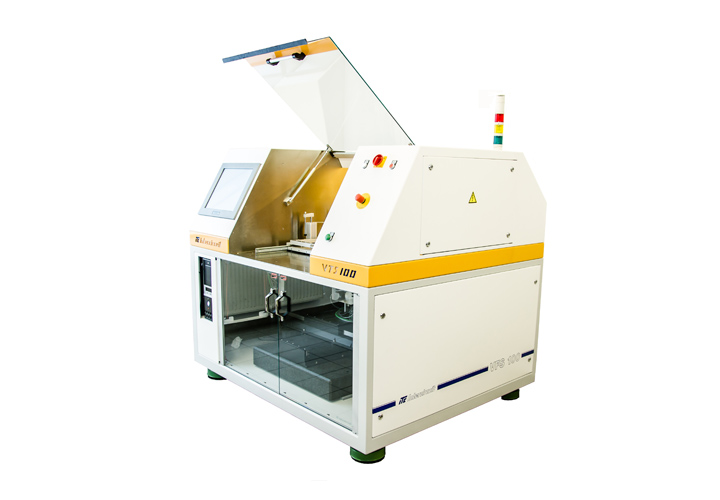
Files through holes with conductive or non-conductive Paste.
Process Advantages:
- Heat dissipation
- High current transfer
- Extremely solid plating bond on the bore surface
Previous solutions:
Plating
Hole plugging with conductive paste (e.g. CB100, Tatsuta)
Disadvantages of the previous solutions:
Plating requires a very large amount of time to build up the required copper thickness in the holes. In addition, there are undesirable high copper levels on the surface or on the upper edges of the hole (donut) Complete filling with copper is almost not possible with through holes.
The use of conductive pastes without selective filling results in very high costs due to the filling material prices. Holes that should be filled with cheaper epoxy paste are also filled with the expensive conductive paste.
The use of the VSF 100 will dramatically reduce the high costs of filling with conductive material. Not all holes on panels require filling with conductive or resistor type pastes. In most cases, non-conductive pastes or epoxy pastes are acceptable. Due to the absolute selective through hole filling with the VFS 100, you can program which holes receive the conductive pastes and which holes don’t. Thus, the use of expensive conductive pastes can be greatly reduced. This is based on the drilling program. In this program, holes to be filled are selected. After a short pre-baking cycle, the remaining holes can now be filled on a non-selective system with epoxy paste with equipment such as our THP 35 that can fill Through & Blind holes in a single pass.
In future, the use of electrically-active fills in the holes is planned. Thus, for example, resistors are inserted directly into the holes. In addition, easy full range resistors with partial resistances within the inner layers are possible.
